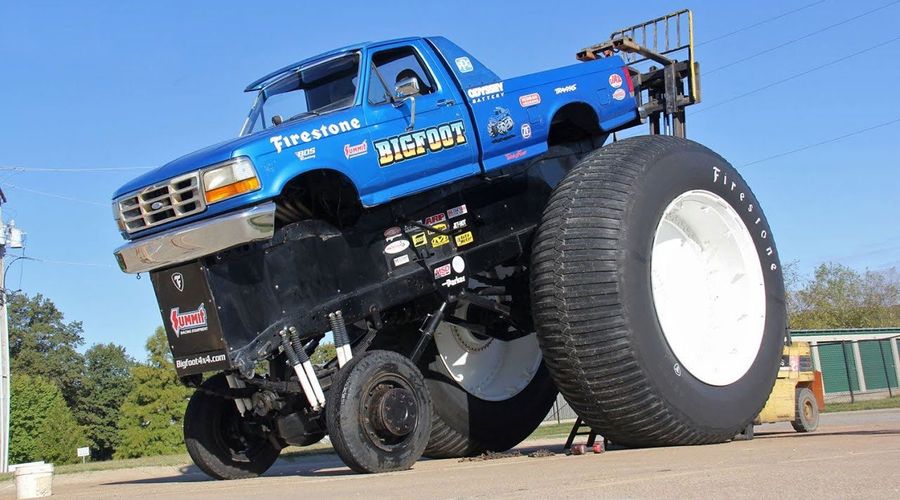We all know that monster truck tires are huge. However, how big are monster truck tires? Whether you’re a fan of monster trucks or just curious, you’ll likely be surprised by how much these tires weigh.
While monster trucks can come in all shapes and sizes, their wheels are typically all very similar in size. Keep reading to find out just how much these huge trucks weigh.
The average monster truck tire weighs about 800 pounds apiece. However, their weight can vary slightly based on how they are crafted. Because each tire is hand-crafted, it can weigh different amounts. It is quite difficult for a professional to get each tire weighing exactly the same, especially since they are generally not commercially produced.
There are quite a few factors that can contribute to a monster truck tire’s weight. Check out the rest of the article below for everything we learned about these interesting tires.
Without the rim, a single monster truck tire can weigh from 800 to 900 pounds. However, there are some substantial differences in weight from company to company.
Because these tires are not mass-produced, they can vary quite a bit. Even the best monster truck tire crafter cannot make all the tires weigh exactly the same.
Therefore, you can expect quite a bit of difference from tire to tire.
Some competitions and shows have specific weight requirements for tires. Others do not.
However, lighter tires are usually considered the better option. After all, lighter tires will perform faster, which is exactly what you want in a racing situation.
Monster truck tires are about 66 inches high. Usually, they’re about 43 inches wide as well. This size is quite large – even compared to an adult person.
In the name of fairness, many competitions have specific regulations on the size of the tires and wheels.
Generally, they fall somewhere close to the above guidelines. However, they can vary a little bit.
Both monster truck tires and truck tires are similarly larger, especially when compared to cars and similarly sized vehicles.
However, monster truck tires are far heavier than regular truck tires.
Your average semi-truck has wheels that weigh around 150 to 200 pounds. Compared to the average car tire, this is extremely expensive. However, it isn’t nearly as large and heavy as monster truck tires.
With that said, the farming equipment tires that are used to make monster truck tires are generally even heavier.
In fact, they are easily one of the heavier wheels out there!
Generally speaking, monster truck tire wheels weigh more than pretty much any other wheel used – including truck tires.
That doesn’t mean that truck tires aren’t heavy; they just aren’t nearly as heavy as monster truck tires.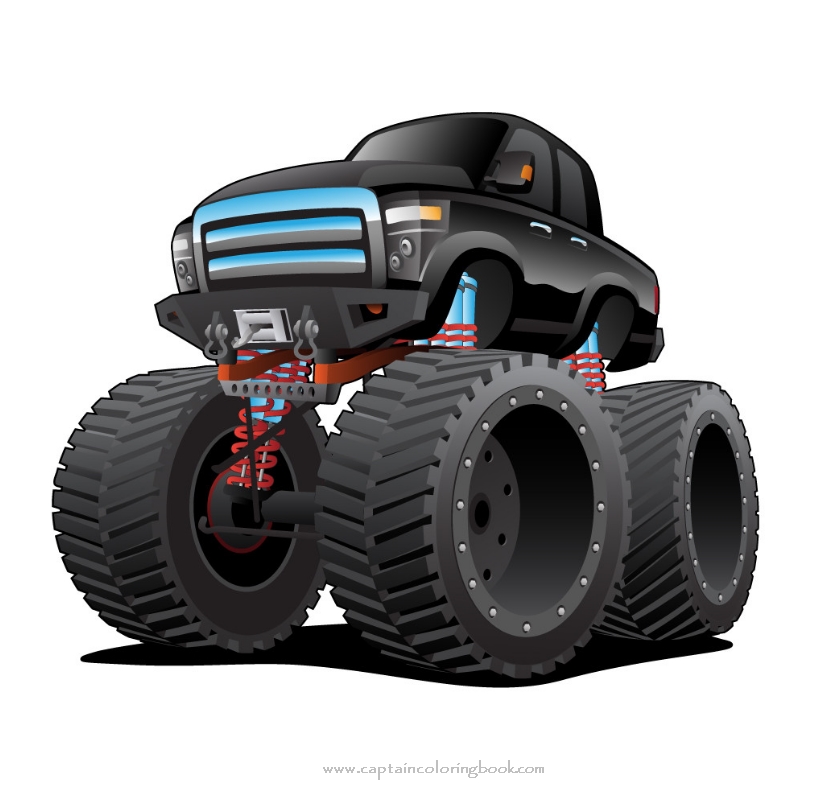
As you might imagine, monster truck tires are not commercially made. There is no factory pumping out truck tires. For this reason, they must all be custom-made.
Generally, most monster truck tires start out as something else. In most cases, they are used on larger machinery on farms. For instance, many were used on fertilizer spreaders and other machinery.
As you might imagine, monster trucks need huge tires. Therefore, farm tires are perfect for distributing this weight. After all, they were made for huge tires anyway.
However, these tires just can’t be plopped onto a monster truck. Instead, they have to be carved carefully by professionals. As you might imagine, there aren’t many of these professionals around.
Therefore, they can be exceedingly expensive. Their size can also vary somewhat. When you’re hand-carving tires, they’re bound to differ somewhat.
However, it takes a substantial amount of skill to get them close enough.![]() You can’t use multiple-sized tires on the same car.
You can’t use multiple-sized tires on the same car.
Generally, it takes about eight to twelve hours to hand-sculpt a monster tire. Much of the tire’s high price comes from this substantial amount of professional time.
Most monster truck tires start out at about 1,200 pounds. However, during the carving process, a lot of the weight is removed.
In many cases, most professionals remove as much as 300 pounds of rubber are removed from each tire.
Therefore, the monster tires are generally lighter than the farm equipment tires they are made from. When it comes to racing, many monster tires producers want lighter tires as they perform faster.
In many cases, teams can also customize their tires with their own tread, since they are hand-carved.
However, this will affect the weight of the tire. Therefore, some weights vary depending on the weight used.
The average cost for a monster truck tire is about $2,600. For four pairs of tires, that’s about $10,000. As you might imagine, the cost of tires is a huge expense for owners of monster trucks.
For four pairs of tires, that’s about $10,000. As you might imagine, the cost of tires is a huge expense for owners of monster trucks.
Obviously, the tires are so expensive because of all the material involved.
Furthermore, monster truck tires are also custom-made. As you can guess, there are no mass-produced monster truck tires.
If someone needs monster truck tires, they have to purchase them custom-made, which makes the price rise substantially.
Plus, it can take up to 50 hours to completely shape a monster truck tire. As you’d guess, all of that craftsmanship costs a substantial amount of money.
While tires can vary in weight, they are all about the same size. Officially, monster truck tires must be 66 inches high and 43 inches wide.
To be considered a monster truck, you often have to have wheels that fit into this category.
To know more about tires, you can also read our posts on how much do NASCAR tires weigh, how many tires does a school bus has, and how much do tractor tires weigh.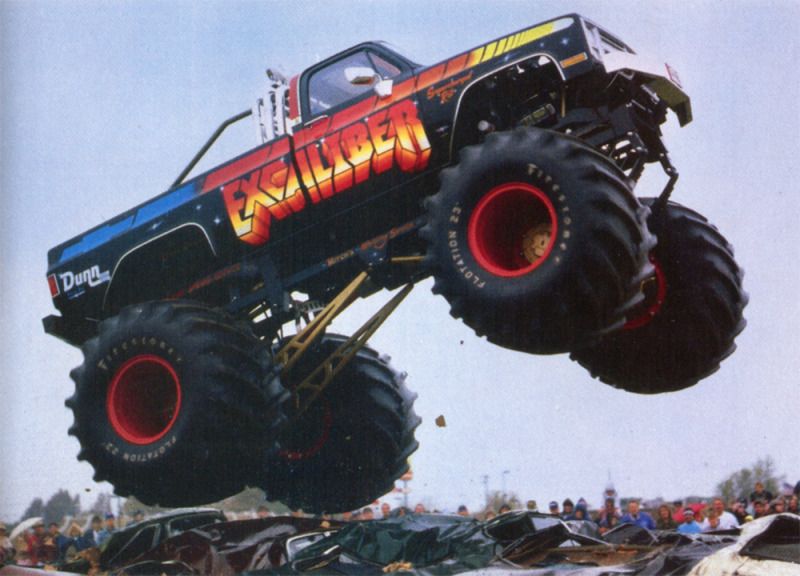
Monster truck tires typically weigh about 800 apiece. In total, that adds about 3,200 pounds to the truck.
However, tires can vary in weight quite a bit. For the most part, they are all custom-made. Therefore, there are bound to be quite a few differences between each tire.
Furthermore, different teams often order custom tread patterns, which can also affect the overall weight.
A monster truck traditionally comprises of a pickup truck that has been completely modified from its factory version and outfitted with larger tires as well as a bigger suspension. Although there are people who still drive modified pickup trucks, there has been an increased uptake of themed vehicles and SUVs (sports utility vehicles). Unlike in the past where metal was the common material, most bodies are today made using fiberglass.
When it comes to their weight, a monster truck is required to have a minimum weight of 10,000 pounds.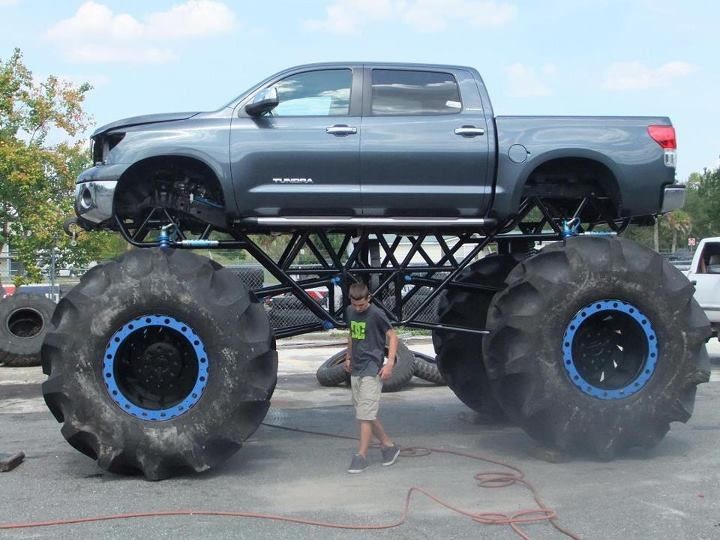 There are, however, a few that have a total weight of 12,500 pounds. Weight is an important factor in monster trucks as it plays a direct role on the total strength that can be injected into its engine and body frame short of compromising its maneuverability and swiftness.
There are, however, a few that have a total weight of 12,500 pounds. Weight is an important factor in monster trucks as it plays a direct role on the total strength that can be injected into its engine and body frame short of compromising its maneuverability and swiftness.
The engine of a monster truck is normally methanol-injected, supercharged, and built according to custom specifications. Its sheer size alone means that the engine easily consumes two and a half gallons of gas with each complete run.
Its motor size is often limited to five hundred and seventy-five cubic displacement feet. For monster trucks taking part in professional or competitive shows, you will find that the team behind it will normally burn up to five engines in a span of twelve months. An average monster truck will cost around $250,000 while a single engine will cost you $50,000.
It is not possible to discuss monster trucks without mentioning their really big tires. All monster trucks are required to run the same set of tires. The tires should be sixty-six inches tall and forty-three inches wide. Each tire ought to run between eight and ten lbs of pressure. This means that the tire will weigh between eight hundred and nine hundred lbs.
All monster trucks are required to run the same set of tires. The tires should be sixty-six inches tall and forty-three inches wide. Each tire ought to run between eight and ten lbs of pressure. This means that the tire will weigh between eight hundred and nine hundred lbs.
All tires used by the competitive or professional monster trucks are custom-made by BKT, Firestone, and Goodyear. BKT also happens to be the official tire supplier of many monster truck competitions, e.g., Monster Jam. The company also manufactures tires for use by agriculture machines as well as large farm tractors.
It takes an average of fifty hours to cut each tire to be used on a truck. Each tire costs an average of $2,600.
The axles in use by modern-day monster trucks are a custom build and tend to be very solid. The axles should be able to withstand the impact that can be dished out by the monster truck, its tremendous torque, as well as its horsepower.
In past years, monster truck designers relied on cast steel military grade axles.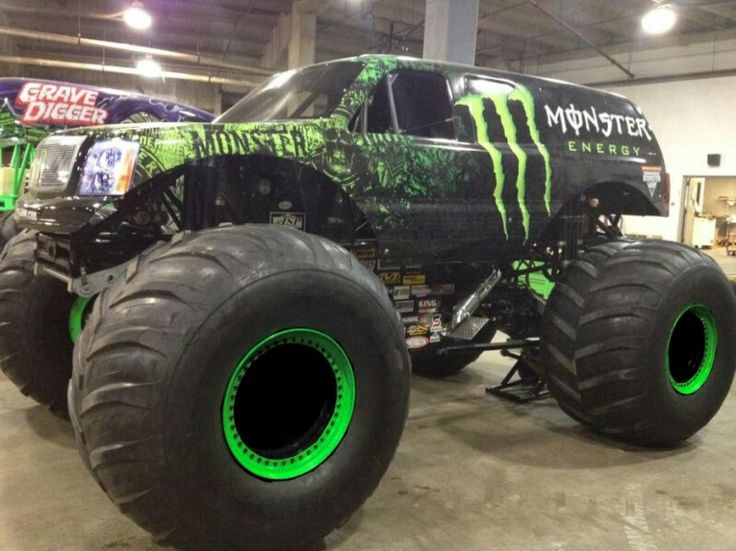 The problem with this set of axles is that they not only broke down more often, but they also happened to be very heavy thereby compromising their speed and swiftness.
The problem with this set of axles is that they not only broke down more often, but they also happened to be very heavy thereby compromising their speed and swiftness.
Each truck comes with two lockers: front and rear. The purpose of these lockers is to make sure that the differential is always engaged. They also serve to provide equal power to all the wheels in the truck. Provision of equal power is essential as it makes sure that even when all the other wheels are in the air and only one wheel is touching the ground, the driver is still able to accelerate without encountering any issues.
As mentioned earlier, the body of the average monster truck is constructed using fiberglass and not metal as many enthusiasts seem to believe. Its body is also custom designed depending on the theme that the team or truck owners want to go with for that particular truck.
Once the design is complete, the fiberglass is molded on to the frame. A body will on average cost around $15,000.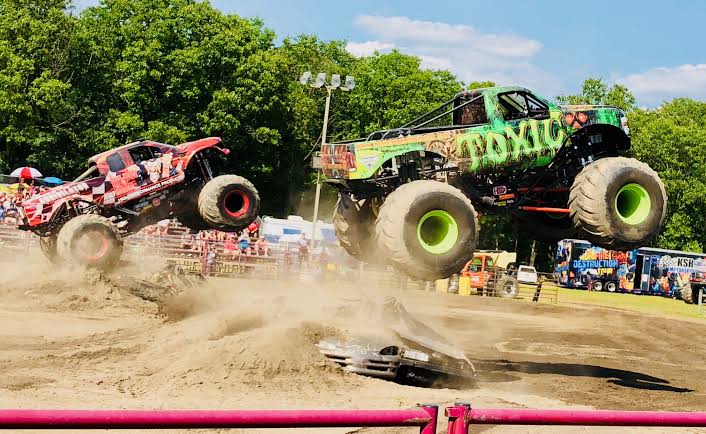 If you are looking for a remake, this will cost around $8,000.
If you are looking for a remake, this will cost around $8,000.
Many trucks are today using nitrogen gas shocks in their runs. There are those that use a single shock for each tire, while others choose to use two shocks per tire. Each shock package comes complete with a spring and coil-over-shock kit.
In many cases, the nitrogen gas shocks are installed in each and every corner of the monster truck. When combined, the shocks provide twenty-eight inches of travel. You can also easily adjust their firmness based on the train as well as the firmness of the track being used for the runs.
In the early days (early and mid-90’s), leaf springs were used on the trucks. The downside to this is that these springs were only able to provide between four and six inches of travel. This is in addition to breaking every so often.
It is, therefore, noteworthy to mention that the nitrogen shocks are considered to be a major improvement. These are shocks that make it possible for the truck to jump high and as far as possible.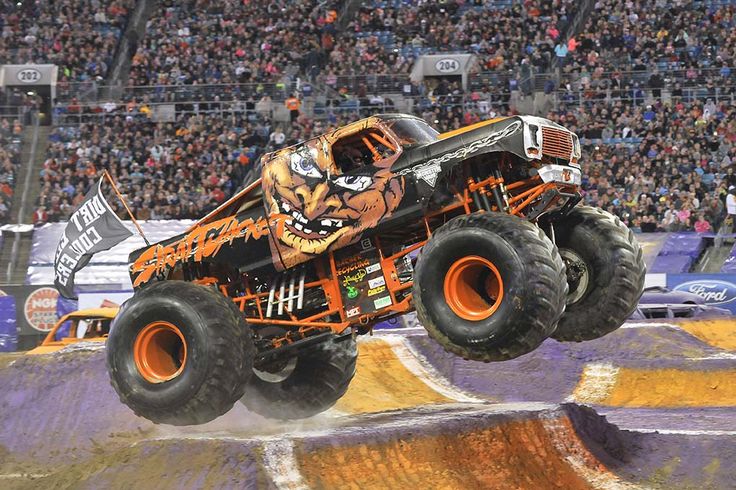 And after all, this is what the audience in the competition stands paid to see.
And after all, this is what the audience in the competition stands paid to see.
All trucks have to be painted in order to hide the rough fiberglass that makes up its body frame. Truck owners can choose to use vinyl wrapped stickers or opt for a professional paint job. Airbrushing is the recommended choice for those that want to paint their trucks.
Often, you will note that the trucks will need to be repainted after each and every show. For this to occur, the body must be removed from the truck, airbrushed and then replaced back on the frame.
The safety of the spectators, as well as that of the drivers, is always given priority when the trucks are being designed. Each truck comes with a number of safety measures which guarantees that even if any part breaks down, it will remain close to the truck and will not be thrown in the spectator stands.
A good example of such a safety measure is the installation of a braided steel cable.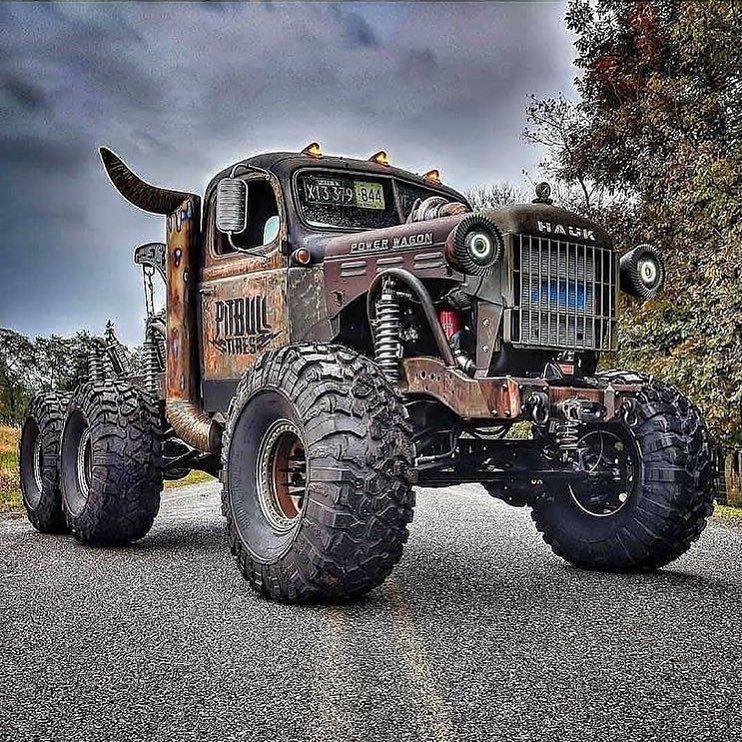 The cable is used to ensure that each and every wheel is securely attached to its axle. The purpose of this particular safety measure is to make sure that in case the wheel spindle breaks down, the affected wheel will not be thrown off, but will instead remain tied to the side of the truck.
The cable is used to ensure that each and every wheel is securely attached to its axle. The purpose of this particular safety measure is to make sure that in case the wheel spindle breaks down, the affected wheel will not be thrown off, but will instead remain tied to the side of the truck.
Another important safety measure that easily stands out in each truck is the presence of a shielded driveshaft. Each shaft, both in the rear and front of the truck must be caged in using bars and steel rings.
The purpose of this cage is to make sure that the shaft will not spin off from the vehicle once it breaks down. The truck’s brakes can be found at each shaft. This means that the truck does not have lots of mechanical gear or lines running across each tire.
All instruments panels are quite similar in that they feature the standard indicators for voltage, temperature, as well as oil pressure. Two handles that can be used to promptly cut power and fuel are also supplied.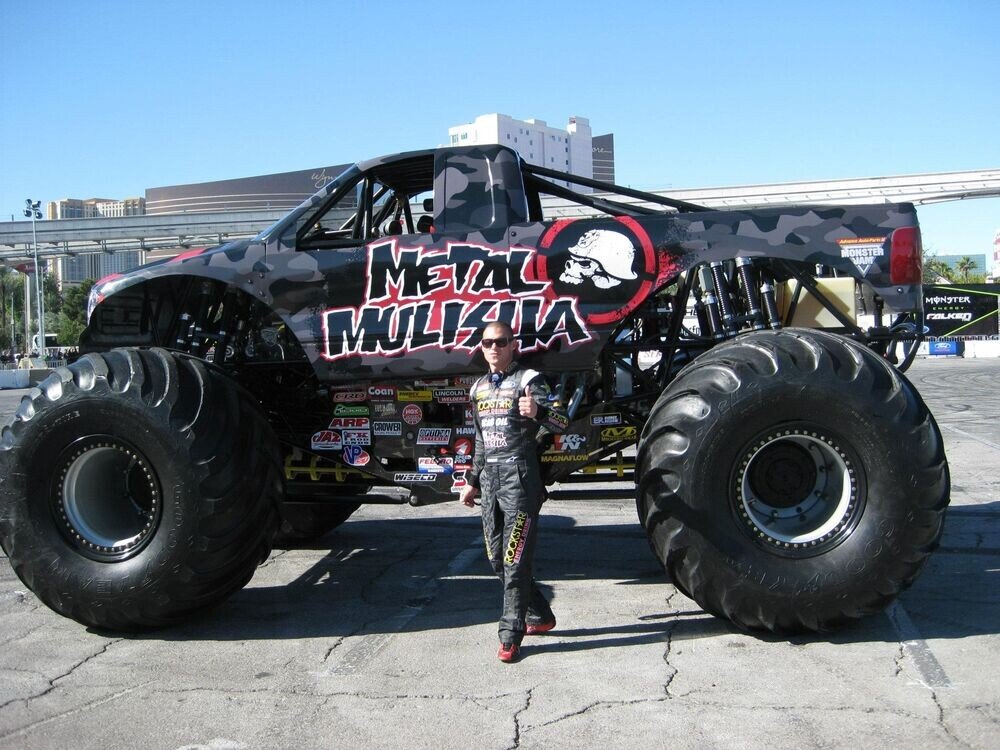
Transmission is pretty basic. They comprise of automatic Powerglide transmissions with two gears. Here, the first gear is used to get the car moving before immediately shifting into the second gear as the RPMs begin to increase.
Given the size, torque, and horsepower carried by each engine, it is not uncommon to find trucks catching fire when on a run. As such, the trucks need to have a set of onboard extinguishers located close to its engine.
It is yet another safety feature which helps the driver put off any flames that may startup when they are on a run. Apart from the two extinguishers located close to the engine, there is another onboard extinguisher that is within the driver’s reach.
Based on all the features that have been described above, it is quite easy to see why all monster trucks are heavy and also why they cost a fortune to build from the ground up.
Photo by Siemens
BelAZ-75710 is the largest dump truck in the world, capable of transporting 450 tons of cargo at a time.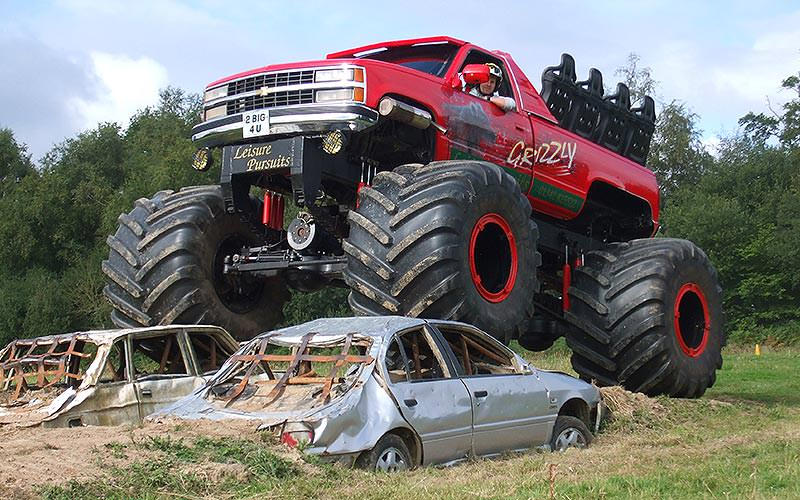 Correspondent BBC Future understands why we need this Belarusian monster.
Correspondent BBC Future understands why we need this Belarusian monster.
It's no surprise that when it comes to mining, every penny counts. As experts from the consulting and audit company PricewaterhouseCoopers (PwC) note in a report published this year, not only are mining costs increasing, but raw material prices are becoming more and more volatile, not to mention other problems such as , for example, as "resource nationalism".
To try to solve at least some of the problems associated with the costs of extracting raw materials, the state company BelAZ from Belarus has created perhaps the largest dump truck in the world - BelAZ-75710.
It is as long as two double-decker London buses parked behind each other, its power plant is six times more powerful than the engines of today's Formula 1 cars, and the Belarusian giant weighs more than a fully loaded passenger aircraft Airbus A380.
Similar articles from the "Magazine" section
If you were standing next to him, you would hardly reach the middle of his tire, of which he has eight, and even then - if only your height is under two meters.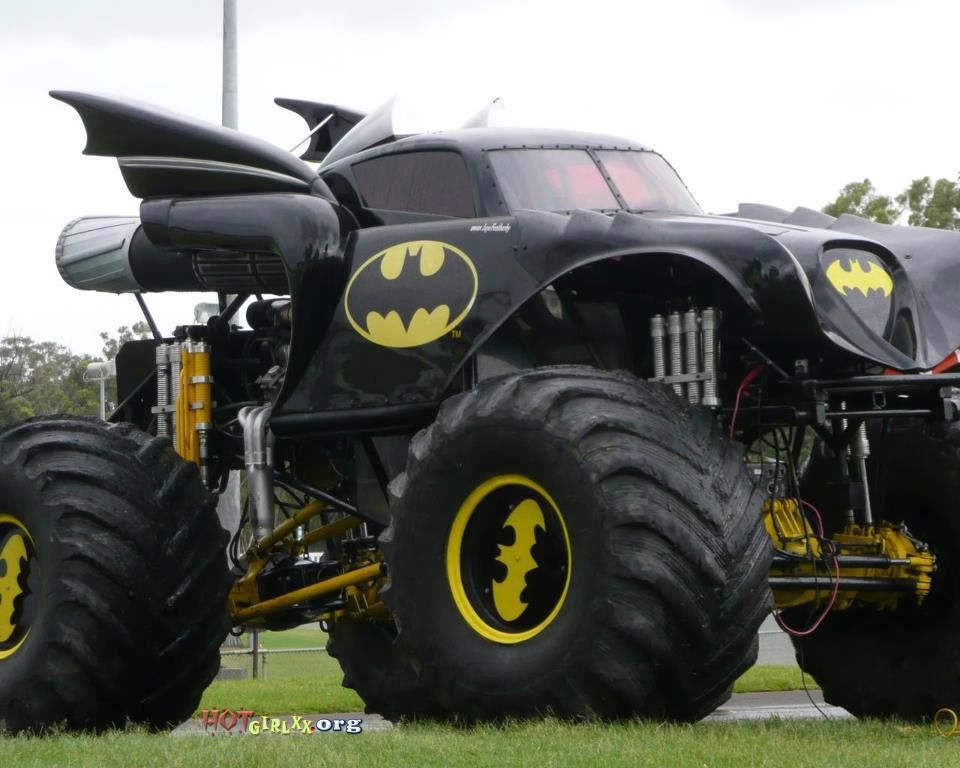 The giant truck was presented to the public last year, but the first and so far the only BelAZ-75710 began to carry blocks in a coal mine in Siberia since mid-October. With its load capacity of 450 tons, it is 87 tons ahead of the current record holder.
The giant truck was presented to the public last year, but the first and so far the only BelAZ-75710 began to carry blocks in a coal mine in Siberia since mid-October. With its load capacity of 450 tons, it is 87 tons ahead of the current record holder.
In order for BelAZ to carry more cargo than any of the existing vehicles, its creators applied a number of non-standard design solutions. He has eight wheelsets, while usually there are six. Each tubeless pneumatic tire can carry a weight of 102 tons, allowing you to carry the maximum possible weight - in addition to the car's empty weight of 350 tons.
This truly monstrous truck has a diesel-electric transmission. Two 16-cylinder diesel engines run a generator that generates electricity to power four electric motors. Compare that to the four- or six-cylinder engine that powers your average family car.
Image copyright Getty
Image captionGiant trucks need giant tires
Skip the Podcast and continue reading.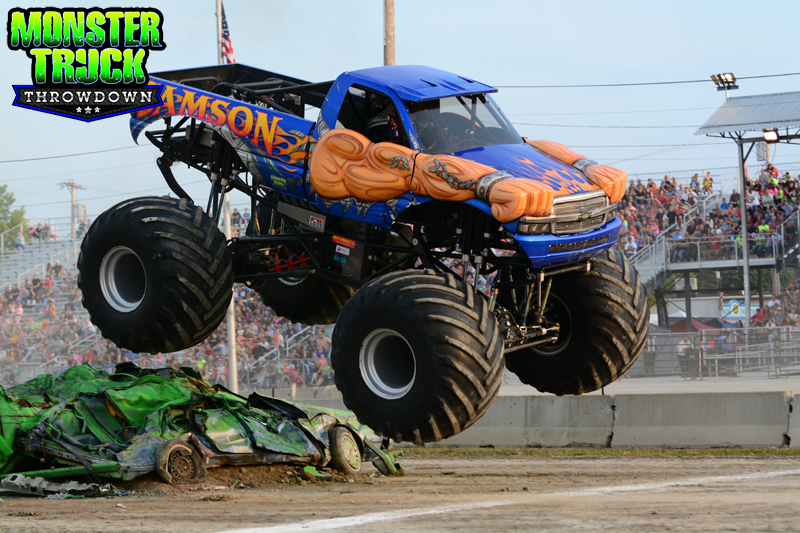
Podcast
What was that?
We quickly, simply and clearly explain what happened, why it's important and what's next.
episodes
The End of the Story Podcast
However, for a car that must constantly stop, start again and carry heavy loads uphill, a much more important property is the torque or torque that it can rightly boast of. The BelAZ-75710 has an absolutely extraordinary maximum torque of 18,626 Nm, which is about 24 times more than what the engine of a 2014 Formula 1 car can produce. The total power developed by the power modules of the machine is 3430 kW or 4600 hp.
Estimated fuel consumption is 1300 liters per 100 kilometers, but in order to save fuel, the car, known in the mining industry as a "tow truck", can only run empty on one of its engines.
However, the Siemens engineers who have been working on the drivetrain have made the unusual choice of all-wheel drive in order to provide improved traction distributed to both axles. It also means that even if one of the electric motors fails, the car will still be able to get to the repair center on its own. This is a very useful feature - after all, tractors capable of towing a machine of this size back to the hangar are very rare.
It also means that even if one of the electric motors fails, the car will still be able to get to the repair center on its own. This is a very useful feature - after all, tractors capable of towing a machine of this size back to the hangar are very rare.
"I'm proud to be driving such a giant," said Andrey Vashkevich, a test driver for BelAZ, one of two people who drove the giant truck in a real-life coal mine. Now Vashkevich is transporting mined rock in his BelAZ-75710 at one of the coal mines in Kuzbass. Development in the quarry is carried out by the large coal mining company SDS-Ugol, which is part of the Siberian Business Union holding.
Image copyright Getty
Image caption,BelAZ has long specialized in huge trucks
"It's easy to drive, but it takes some time to get used to its size. Four-wheel drive makes it easier to drive in difficult conditions, such as slippery roads, and braking is also more efficient," says Vashkevich.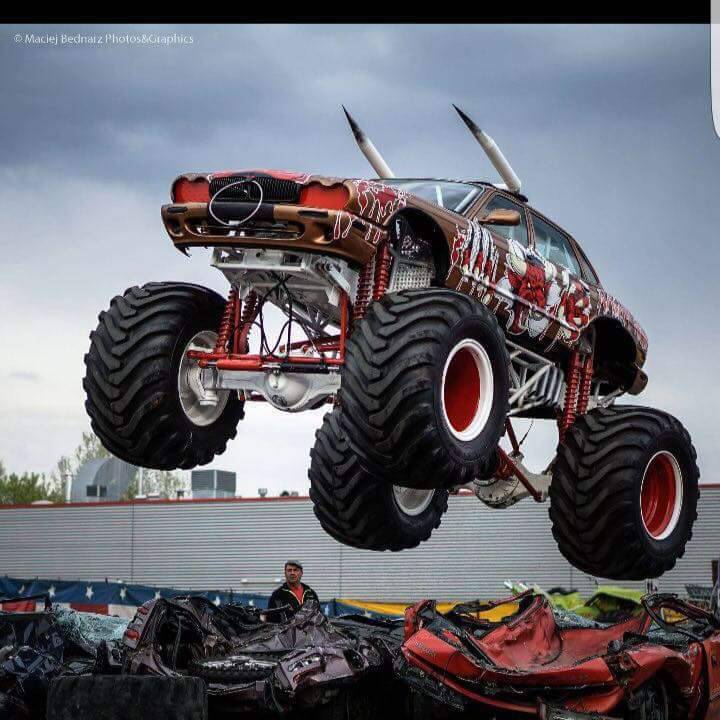
There is hardly any point in a giant truck that can carry huge loads, but is difficult to maneuver. In order to allow drivers to quickly get where they want, both axles are made steerable. The turning radius is 19.8 meters, which is not much more than the 17.2 meters of its younger brother BelAZ-360, a truck that is the second largest dump truck the company currently produces.
With a height of 8.2 meters, the maximum speed of the truck is 64 km/h, and it can reach a speed of 40 km/h when moving up the surface with a slope of 10%. In addition to this, it is able to overcome short stretches of the path even with an inclination of 18%.
Image copyright Getty
Image caption,Dmitry Medvedev could not resist the temptation to turn the steering wheel of the giant. It was in 2010 in Appatity, when Medvedev was president of Russia.
With remote access to the machine's systems, Siemens engineers can monitor truck performance, diagnose problems and update BelAZ-75710 software without leaving their office in Alpharetta, Georgia, USA.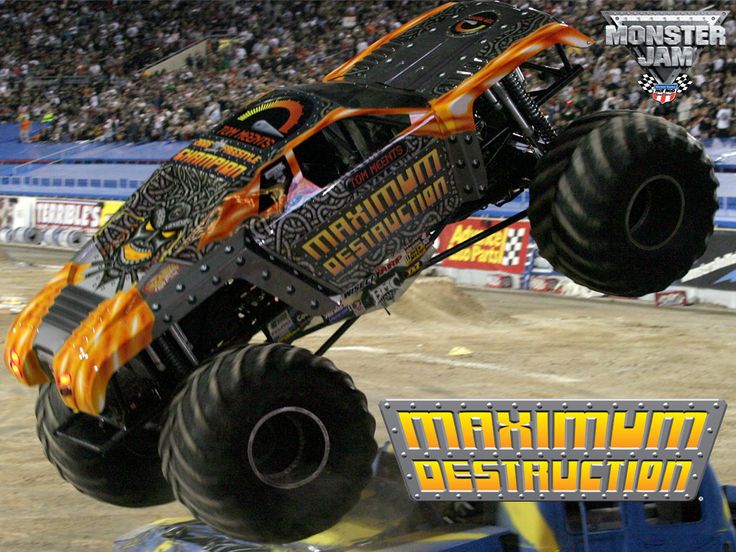
"Engineers resident in the US don't have the ability to rush to Russia if there's a problem there, so remote electronic communication is a critical feature," said Joe Mazumdar, manager of the mining truck division at Siemens, who led the team who developed the transmission of the car.
Now two more BelAZ-75710s are in production. For those contemplating a purchase, the price tag is just over $6 million.
The current holder of the title of the world's largest truck is the American Liebherr T282B, listed in the Guinness Book of Records, with a payload capacity of 363 tons. Thus, the Belarusian giant has every chance of becoming a new favorite among mining corporations.
"It's a superb piece of engineering, and if it works, [BelAZ-75710] will capture the imagination of any customer," said Brian Pullman, a respected mining engineer with international mining and engineering consultancy Golder Associates. .
"Combining two engines makes it quite a complex mechanical system, so I'm interested in how high its production efficiency and fuel consumption are. But even if it allows you to drop a few cents from the cost of each ton of rock, this can have a serious impact on reducing production costs in mines operating in some of the world's largest deposits of coal, iron ore and copper," Pullman said.
Read the original of this article in English is available on the website BBC Future .
Guides
ByBenjamin Noah
The most famous monster trucks
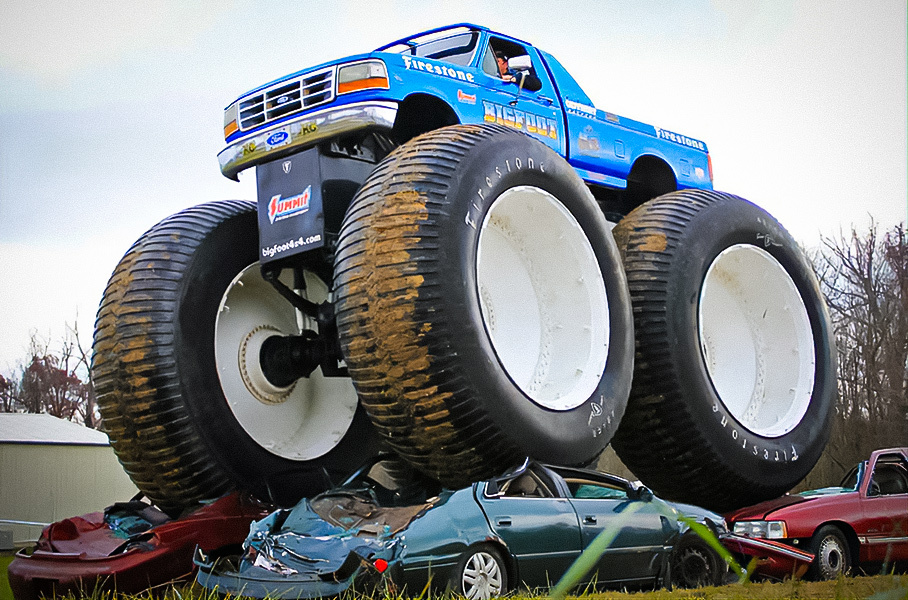
Chevrolet is the official number one monster truck in the country. Chandler: Everett and I were very competitive with each other, but we were and are best friends.
Below you can read our tips for the 10 and 8 weirdest monster trucks of all time!
The rarest truck ever made was the Madusa Farewell Tour Truck in 2016, while Canada's most exclusive Skate-A-Zoid trucks are the rarest of all and are not only sold in West 49 storesas promotions. limited, but also sold in 3 published color options.
According to Guinness World Records, "The [tallest] monster truck is the Bigfoot 5, which is 15'6" tall and fitted with 10' high tires.
Grave Digger - one of the most famous and recognizable monster trucks of all time - the flagship team of the Monster Jam series with seven active Grave Digger trucks driven by different drivers so that one truck can appear at every Monster event. Jam.
20 best movie monsters of all time, rating
The first Bigfoot monster truck was built in 1975 by Bob Chandler (USA).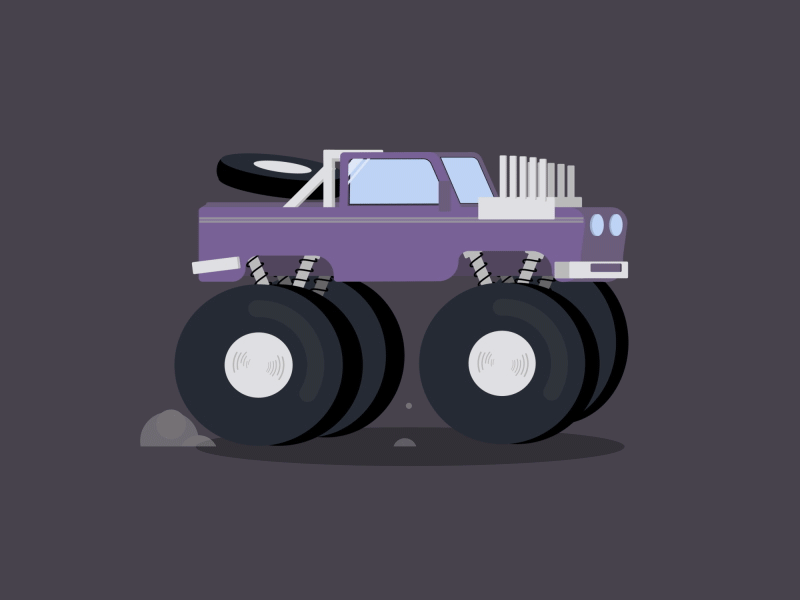
Grave Digger was not known because he won most of the tournaments. In fact, Dennis Anderson earned the nicknames "One Shot Dennis" and "One Run Anderson" due to his frequent early race crashes.
With four victories in the Monster Jam World Finals, Grave Digger has become one of the most decorated monster trucks. The Grave Digger team is also known for their fearless driving style that results in great stunts and epic crashes.
Meet the $1 million Sin City Hustler, the world's first luxury monster truck.
On February 15th, Monster Jam announced that it would be phasing out self-propelled shredders due to concerns that modern vehicles would throw more trash into the stands. Monster Jam has kept the machines integrated and is currently working on an alternative to chopping.